Posts Tagged ‘pet vaccination’
Kennel Cough: What You Need To Know
 Doggy daycare, like regular daycare, can be a cesspool of different germs and infections. If your dog comes home from daycare with a strange cough, your dog might have contracted kennel cough. Kennel cough can be caused by a variety of different viruses and bacteria. Kennel cough is caused by a dog inhaling bacteria or viruses into their upper respiratory tract. Symptoms can be worsened if their lungs are already overworked by cold air, cigarette smoke, stress, or crowded quarters with poor ventilation.
Doggy daycare, like regular daycare, can be a cesspool of different germs and infections. If your dog comes home from daycare with a strange cough, your dog might have contracted kennel cough. Kennel cough can be caused by a variety of different viruses and bacteria. Kennel cough is caused by a dog inhaling bacteria or viruses into their upper respiratory tract. Symptoms can be worsened if their lungs are already overworked by cold air, cigarette smoke, stress, or crowded quarters with poor ventilation.
The respiratory tract is usually lined with mucus which helps trap particles that might cause infections which is why kennel cough is often caused by multiple different pathogens – one weakens the mucus in the lungs allowing the other to take root and cause infection. Kennel cough is extremely contagious and spreads around the environment where other dogs inhale the pathogen and become sick. Kennel cough is difficult to control since it is airborne. The main symptom of kennel cough is a cough that sounds like a goose honk. Some dogs will only experience coughing with kennel cough while others may have other symptoms such as sneezing, a runny nose, or eye discharge.
Severe symptoms may include retching, lethargy, and fever. Usually kennel cough lasts for three to four weeks with the worst symptoms in the first five days and dwindling over time. Young puppies and older dogs with weakened immune systems are more susceptible to kennel cough and can take up to six weeks to recover. Stress and environmental factors like temperature, dry climate, and airborne irritants like smoke can increase the severity of prevalent symptoms.
Vaccines for kennel cough are extremely important as they can reduce the odds of getting it or reduce the symptoms. While the vaccine is not 100% effective, it can greatly reduce the odds of your dog contracting the illness if they is frequently in conditions that tend to spread the disease, such as daycare. The vaccine is typically offered in oral, intranasal, and injected forms. The biggest mistake believed by some is that kennel cough is a minor issue that doesn’t call for a trip to the vet. While it may seem like a minor problem, kennel cough can lead to pneumonia or death, especially in dogs that already have weakened immune system.
It’s better to be safe than sorry and take your dog to the vet at the first signs of kennel cough, rather than waiting for the issue to progress. Your vet will be able to tell you how severe of a treatment needed to help your pets kennel cough. A mild cough may only need rest and a cough suppressant while severe kennel cough may require antibiotics or supportive care. Coughing is not only indicative of kennel cough; it may also indicate major health issues such as a collapsing trachea, canine distemper, canine influenza, bronchitis, asthma, or even heart disease. It is always best to err on the side of caution and bring your dog to the vet at any sign of coughing.
There are several home remedies that may help soothe your pet’s symptoms and reduce discomfort. Create a humid environment by using a humidifier or turning on a hot shower and putting your dog in the bathroom with the steam. Some dog owners have found that a small amount of honey daily can help a dog’s throat. Honey has natural antimicrobial and anti fungal agents that can reduce inflammation and soothe sore throats. Thus, reducing coughing while helping your pup fight off infection. Simply give your dog a spoonful of raw honey a few times a day. As always, be sure to check with your vet before introducing human food into your dog’s diet. Another option to consider is CBD oil. It is natural found in hemp plants and highly regarded for its health benefits. The anti-inflammatory properties of CBD oil can ease pain and swelling, restoring comfort.
Kennel cough is not a common cold. It is best to visit your veterinarian right away to learn of the best treatment path. As always, feel free to contact Dr. Olsen at 618-656-5868 with any questions or to set up an appointment.
How To Protect Your Pet From The Heat
 Protecting your pet from the heat is extremely important. As temperatures rise, it becomes more and more uncomfortable to be outside. This is true for your dog as well. During the summer, it is healthier for your dog if you limit outside time, time in dog parks, and exercise to cooler parts of the day, such as morning and evening times. It is not always the temperature as well. The humidity can cause your dog to have difficulty panting. Panting helps your dog cool itself off. Without being able to pant, your dog’s temperature can rise that can lead to heatstroke. If your dog is exhibiting any of the signs of overheating (heavy panting, heavy drooling, trouble breathing, rapid heartbeat, dark or red gums and tongue, dizziness, and weakness, or agitation), be sure to bring your dog to the vet right away. To avoid overheating, there are multiple things that you can do to keep your puppy cool during the hot summer.
Protecting your pet from the heat is extremely important. As temperatures rise, it becomes more and more uncomfortable to be outside. This is true for your dog as well. During the summer, it is healthier for your dog if you limit outside time, time in dog parks, and exercise to cooler parts of the day, such as morning and evening times. It is not always the temperature as well. The humidity can cause your dog to have difficulty panting. Panting helps your dog cool itself off. Without being able to pant, your dog’s temperature can rise that can lead to heatstroke. If your dog is exhibiting any of the signs of overheating (heavy panting, heavy drooling, trouble breathing, rapid heartbeat, dark or red gums and tongue, dizziness, and weakness, or agitation), be sure to bring your dog to the vet right away. To avoid overheating, there are multiple things that you can do to keep your puppy cool during the hot summer.
To begin, make sure to keep your dog groomed, especially if they have long fur. Each breed has different needs. For example, dogs with short, thin coats handle heat better than cold weather and mountain dogs. No dog is immune to heatstroke or paw pad burns, so it’s important to keep your dog groomed. If you get any mats and tangles out of their fur, it will help keep them cool. However, don’t shave or clip their coat until you talk to your vet or groomer. The extra fur that helps your dog stay warm in the winter may also keep it cool in the summer. To keep your dog’s paw pads safe, stick to shaded areas or bring insulation booties to protect your dog’s feet from the hot pavement. To test the heat of the pavement, feel it with the back of your hand. If it is too hot for you, then it is definitely too hot for your dog.
Similarly, be sure to keep your dog’s shots up to date, especially in the summer. The parvovirus spreads in hot weather. During the summer, your dog probably spends more time outside which means that it could come in contact with an animal that has rabies. Summer is also a high season for fleas and mosquitos, both which carry many diseases. By giving your dog medication to prevent these pests, your dog will be safer in the long run.
This should go without saying but leave your pet at home unless your destination is pet friendly. Do not leave your pet in your car. Even with the windows of your car cracked, the temperature inside the car rises rapidly in the summer heat. Similarly, keep your dog’s water supply full. Be sure that there are multiple bowls available for your dog that are always filled with fresh water that is clean. Even if you think that the walk you are going on will be short, be sure to bring clean drinking water and a dish that your dog can easily drink from. If you are worried that your pet is not drinking enough water, add some ice cubes to the bowl. It will make drinking water more appealing to dogs.
When you are spending days outside by a pool or a lake, you can do many things to keep your dog cool while you enjoy the summer sun. You can freeze containers of water so that they will stay cooler for longer. Be sure to keep their water in the shade. You can also provide a small kiddie pool or a sprinkler for your dog to play in. These allow fun places for your dog to cool off and maybe even get some exercise. Similarly, you could put a pet-friendly dig area for your dog in your yard. These can include a sandbox area that your dogs are able to dig in. Dogs often dig a hole to sit in and keep cool. To make an even cooler area, you can spray sand with your cold water. Be sure to make sure that it is located in the shade and not in the sun.
Sometimes, a little extra help is needed to cool your dog. Dog cooling mats and cooling vests are great products. Many work by soaking them in cool water for a long time. If you don’t have access to these, you can soak a towel in cool water and let your dog lie on it. You can also spray your dog’s belly and paws to cool them down. Dogs will cool down more quickly through their belly and paws than water sprayed on their back. Another great DIY to keep your dog cool is to put a pan of ice water in front of the fan to make it more effective for your pup to stay cool.
There are many similar DIYs to keep your pet cool in the summer. Dog-Safe ice cream exists, and you can make it at home. Here is a big list of easy to make ice creams that won’t cost an arm and a leg unlike the gourmet pet store ice-creams. You can also make some frozen treats to put in your dog’s favorite toy. Kong toys come in all shapes and sizes because all dogs love them. They are tough rubber chew toys that are meant to be filled with yummy sticky treats like peanut butter to keep your dog occupied for a while. There are pet-friendly recipes available that are meant to be frozen to keep your dog refreshed while they lick the center. Similar to the Kong treats, you can freeze your dog’s favorite treats in a popsicle mold and fill it with water. It will give your dog a fun treat to keep them cold.
The summer gives many fun opportunities for you and your family. You wouldn’t allow a member of your family to overheat, so don’t let your dog (a furry family member). By following the simple rules of pet care and making some fun treats that your dog will enjoy, you and your dog can have a healthy and cool summer! Make sure to contact our office if you have any questions!
Tips For Welcoming A New Puppy Into Your Family
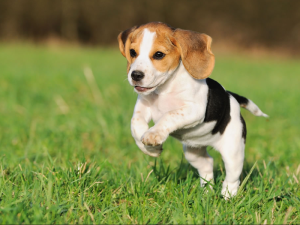 After three years of having a dog-less house with the passing of our beloved Chocolate Lab Ruby, the Olsens are getting a new puppy. Part of me is still in denial, and part of me is apprehensive as to what we need to do to prepare for a new puppy, which is something that we had not had to do in about 13 years. So now that the purchase is done, it is time to ready the home for our newest member, prepare the prior residents (our cats) for invasion of another four-legged friend, and purchase the supplies and equipment needed for the puppy.
After three years of having a dog-less house with the passing of our beloved Chocolate Lab Ruby, the Olsens are getting a new puppy. Part of me is still in denial, and part of me is apprehensive as to what we need to do to prepare for a new puppy, which is something that we had not had to do in about 13 years. So now that the purchase is done, it is time to ready the home for our newest member, prepare the prior residents (our cats) for invasion of another four-legged friend, and purchase the supplies and equipment needed for the puppy.
Preparing the Home
We all know that puppies get into everything. So we will need to act like a forensic detective and get down on our hands and knees to look for things that a playful puppy might foresee as fun. Items like electrical cords should be tied out of reach. Dangerous products such as cleaning supplies and other items should be locked in a cabinet or placed out of reach. Any valuable items or family heirlooms need to be kept out of reach so they do not become your puppies new chew toy. Lastly, unless you want to be like Imelda Marcos and purchase a new pair of shoes each week, it is best to make sure your shoes are stored away in a closet and the door is secured.
Puppies are always looking for their next meal, so garbage can be enticing to them. In order to prevent them getting into the trash, it is wise to have trash cans that have sealed lids.
The puppy should not have free reign of the house, so you will need to have gates and barriers to keep him in his allowed space. This will also include a kennel for his nighttime bed, which I will talk about later in the article.
No puppy will be an entirely indoor dog unless it is in a big city with little green space. So here in Madison County, Illinois, we will want to examine the outdoor area so that there are not any chemicals or poisonous plants that will entice the inquisitive puppy. Your new puppy may be the cutest thing that you have ever seen, but your neighbor may not have the same opinion. And they always say that a good fence makes good neighbors. So it may be important to make sure that you have one that doesn’t allow your pet to roam free.
Items to Have
As I eluded in the last section, in my opinion, it is best to kennel train your pet. No, this is not seen as “doggie jail” to the pet, but as I explain to my clients, it is best to treat a kennel as it is their bedroom and their place of security. I recommend that you get a larger one as they get larger. It should start as one that is just big enough for them to sleep in. If it is too large, that will allow them to urinate and defecate in the kennel and may inhibit the potty training outside.
I am not an advocate for “potty pads.” I feel that they are just condoning bad behavior by the puppy. The learning puppy will get confused by our laziness that more or less tells it that “they can go here but not there in the house.” To a puppy, this thinking may be problematic.
Obviously we want food bowls as well as toys to keep it occupied when you can’t give it the attention it needs. With the toys, I recommend that they be they type that are indestructible like “Kong toys.” Avoid those that they can easily chew up and have the possibility of ingesting.
A new owner will want to have a collar and a leash. When you take your pet out on walks, it will be necessary to have these to protect your pet from injury by other pets or getting ran over by a vehicle.
Grooming brushes are important to have especially with those puppies that will have long wooly coats. They will need to be brushed frequently to prevent matting and tangling.
I am not a big proponent of treats, but they would be alright to have on hand, but I caution the owner to use them in moderation.
Bringing it Home
The big day to bring the puppy into your household is here, so what should you do?
Many people erroneously allow their new puppy to roam free and explore the house. This is sensory overload. Too many new places, new smells and people at once may confuse him. Instead, let him explore a designated area, perhaps where his food and water are. Or he can acclimate himself to a small puppy-proofed space where his kennel is. Then introduce him to the rest of the house one room at a time, skipping the areas that you want off-limits to him.
It is best to introduce your new puppy to its’ new owners one at a time. I know that they are cute and cuddly, and everyone wants to meet him, but that can create too much excitement for the puppy and may stress the puppy out. So it is best to let him meet each family member quietly and make it rewarding and pleasant.
As previously mentioned, puppies love to chew, so make sure that he has a safe chew toy. If he starts to chew on anything else, redirect him to the chew toy.
It is important that your new puppy know where its’ sleeping quarters are. Puppies sleep between 15-20 hours a day, and likely they will drop in their tracks. It is important to take him to his crate when he seems to be ready to nap and at bedtime. Contrary to what most people think, this is not “doggie jail” as the puppy will associate this as a safe and secure place.
House training starts on day one. Your puppy needs to know exactly where you expect him to do his business. Prevent accidents by monitoring the puppy and take him outside accordingly. This helps him to learn where not to go. Accidents happen, but don’t scold the puppy. Clean up the accident with an enzymatic cleaner.
Teaching your new puppy basic behaviors like watch me, sit, or down are important. With positive reinforcement based training, you can encourage good manners in very young puppies.
Obedience training for your new puppy is always important. It will teach basic manners that can lead to all kinds of fun dog activities and provide socialization with other dogs and humans.
In a few weeks, I will be reliving the excitement that our family experienced 13 years ago. Getting a new puppy can be an exciting and stressful time in any household. It teaches our children to be responsible and committed. So if you need advice or any tips in preparing for the new family member, please do not hesitate to contact or call the Olsen Veterinary Clinic at 618-656-5868.
Dr. Olsen’s Breed Spotlight: The Lowchen
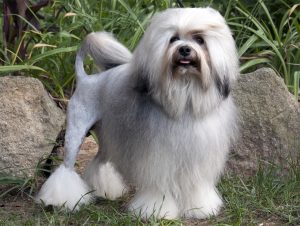 The month of February is reserved to spotlight a dog breed. Most of the time, I try to shed some light on a breed that isn’t very popular. Well this month is no exception as I am featuring a dog that is not very popular, unique in its appearance, rich in history and really considers its only job as being a companion for its owner. That breed is the Lowchen, which is also known as the “Little Lion Dog”.
The month of February is reserved to spotlight a dog breed. Most of the time, I try to shed some light on a breed that isn’t very popular. Well this month is no exception as I am featuring a dog that is not very popular, unique in its appearance, rich in history and really considers its only job as being a companion for its owner. That breed is the Lowchen, which is also known as the “Little Lion Dog”.
The Lowchen is a small breed that generally stands about a foot tall but has an enormous heart. The coat is traditionally kept in a “lion clip” in which most of the hind quarters and tail are clipped down close to the skin. The overall effect is that of a mini lion with a full mane and plumed tail. This breed coat comes in many colors and color combinations.
The breed has a long and somewhat controversial history. We know from works of art depicting images of small dogs in a very distinctive lion trim from the breed dated to the 16thcentury. The breed has been depicted throughout the centuries in paintings, drawings and tapestries from around the world.
The controversy arises as to the exact origin of the breed. There are several theories of debate with one thinking that the breed originated in Northern Europe which is now known as Germany, France and Belgium. Because it came from this area, the Lowchen is thought to be tied to the breeds that were the forerunner to the modern day poodle. The stories go that they were a favorite companion for the ladies of the castles and they would lay close to their owners at night to keep them warm like a water bottle, as well as attract the fleas away from the owner.
Another theory is that the Lowchen originated in the Mediterranean region and are directly related to the Bichon breeds. Also there are some theories that the breed might have originated in Russia or Tibet.
The Lowchen has been a resident of all households through the ages, from castles to farmyards and cottages. Aside from the function of being a companion, they possibly were varmint hunters and fierce little guards.
There is a story from the late 1700’s about a Lowchen whose name was Bijou. As the story goes, Bijou was so upset that his owner was leaving him behind, he jumped out of a castle window into the Lahn River that was 60 feet below. One ending has him surviving and was rewarded by riding to the hunt in the owner’s saddle, the other that the jump ended in disaster. Whichever the outcome, his portrait from 1787 still hangs in the Baronesses’ bedroom in Wellburg Castle.
Little has been written about this breeds early years. The first record of a breeder and fancier was Dr. Walthier in Germany in the 1800’s. The breed standard was written in the 1800’s and in 1897, a Madame Madelaine Bennert purchased her first Lowchen. She is the one who would be recognized for her efforts in saving the disappearing breed.
In 1999, the Lowchen was admitted into the AKC in the Non-Sporting group. The Lowchen is a small breed that weighs about 15 pounds and has a life expectancy or about 13-15 years. It is a very loving dog whose sole purpose is giving love and hoping to get loved in return. It might see a squirrel, chase it and catch it, but it would not know what to do with it if it did catch it. It will bark at strangers, but then when they enter, the Lowchen will lick them to death. The Lowchen’s favorite spot to be is on the couch watching out the window.
Don’t mistake the breeds sweetness, because it is a true lion that will stand up to any German Shepherd and bark down a Great Dane. They are active, smart, and love children. They can make very good agility dogs because they are trainable, resourceful and very adaptable. Since they like to bark, it is recommended that they undergo some obedience training. Due to their haircoat it is advisable that they be brushed regularly and see an experienced groomer monthly. Another plus with this breed is that they are hypoallergenic.
There are very few health problems with this breed. But they may suffer from patellar luxations, heart issues and some eye issues.
Here at the Olsen Veterinary Clinic, we love to see all breeds. So if you have a Lowchen, or a mixed breed, gives us a call at (618)-656-5868 and we will be happy to assist you.
How Often Should I Bathe My Dog?
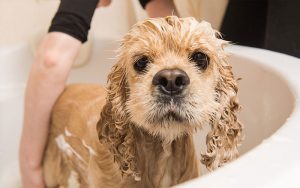 We as humans bathe at least once daily. Right? So should pets get bathed daily also? This is one of the questions that we get from pet owners regarding their four-legged family member. Generally my answer to the question would be no, but there are many factors that go into determining the proper frequency.
We as humans bathe at least once daily. Right? So should pets get bathed daily also? This is one of the questions that we get from pet owners regarding their four-legged family member. Generally my answer to the question would be no, but there are many factors that go into determining the proper frequency.
Obviously if your pet has been running and playing outside a lot and they are dirty and very odorous, then they possibly should be bathed. But why do we even bathe our pets? The easy answer is for its health. Without one, your dogs’ skin could get irritated and infected and its coat could get matted and hard. A dog’s breed, coat characteristics, and other variables play a factor in this.
So how often do we bathe a dog? The top reason is when the smell. Easy rule of thumb is if it smells beyond just normal dog smell, it’s time for a bath. If you are unsure about the skin, I would recommend talking to experts in the field like your veterinarian or a professional groomer. They can help you understand what may be the best options for your pet.
If your pet has skin issues, it may be prescribed a medical shampoo. As a dermatological professor told us—if it is wet, you want to dry it and if it is dry you will want to add moisture. Unfortunately, there is not one shampoo that will do both.
As human’s have different hair and skin issues, so do dogs. Some breeds are double-coated breeds. These breeds like the Samoyed, Alaskan Malamute and the Chow Chow most likely will require less frequent bathing but more brushing to keep their coats healthy and clean. By contrast, a breed like the Bassett Hound has a more oily coat, so it may require more frequent bathings. Short haired breeds like Dalmatians and Weimaraners tend to require very few bathings as they can regulate their natural oils without much help.
Now that we have determined factors that play into bathing your pet, what do we buy? First you will need a shampoo that will be appropriate for your pet as we have discussed previously. Secondly, some lukewarm water. Hot water can burn your pets skin and dry it out. Rule of thumb– the cooler the better. A good brush is good to have on hand. Prior to bathing it is best to comb out your pet and shed any dead hair. By combing agains the coat, you can prevent mats and help spread out your pet’s natural oils. Be sure that you have towels on hand to wipe them dry. I do not recommend using a blow dryer as the heat will dry out the skin. There are also dry shampoos out there that you can use to spray them down with and wipe it off without having to bathe them to preserve the natural oils.
So you are still confused about bathing your pet? Remember that we are always here to assist you, so please don’t hesitate to call us at (618)-656-5868.
Dr. Olsen’s Breed Spotlight: Pixie-Bob Cat
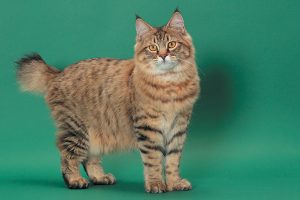 Dogs are considered “man’s best friend.” But what do you get when you don’t have room or time for a dog? How about a cat that thinks it’s a dog? The breed of cat that I am spotlighting this month has been described as that. It is called the Pixie-Bob.
Dogs are considered “man’s best friend.” But what do you get when you don’t have room or time for a dog? How about a cat that thinks it’s a dog? The breed of cat that I am spotlighting this month has been described as that. It is called the Pixie-Bob.
The Pixie-Bob breed is thought to be the result of the natural mating between a bobcat and a domestic shorthair, but they may also have sprung from a natural genetic mutation that gave them their wild look and bobbed tail. It is one of those mysteries that no one will ever know for sure. This breed was first developed in the Pacific Northwest in the mid 1980’s by a woman that acquired a male kitten with distinctive characteristics like a spotted coat, a short tail and more than usual numbers of toes. A year later, she acquired another male cat with a short tail and with the help of a neighbor’s female cat, produced a litter of kittens. One, a female, had a muted spotted pattern and the woman kept her—naming her Pixie. The breeder wanted more cats like Pixie, and soon the breed was born. They were recognized as an actual breed by the American Cat Fanciers Association in 2005.
Pixie-Bobs are described as “big, lively and outgoing.” The breeds’ devotion to its family belies its somewhat wild look. They tend to be a large cat where the male and female can weigh up to 12 and 25 pounds respectively. They are brawny and muscular which is why some breeders believe that the Coastal Red Bobcat had to be the founding father. Their ears tend to be tufted and resemble that of a bobcat by having lynx tips on the ears. Pixie-Bobs have a thick wooly coat like a bobcat and can be either long or short haired. They normally have a striped coat pattern and come in a variety of colors, but most are tawny, light gray, or reddish. Their eye color can be from golden brown to gooseberry green. A Pixie-Bob’s tail is a minimum of 2 inches by can be as long as to their hock. Their facial hair grows downward giving them the appearance of a man’s muttonchop sideburns. One other unique feature that some Pixie-Bobs have are that some are polydactyl. This means that they have more than the usual number of digits on its paws. Polydactyl cats are considered lucky, so if you own a Pixie-Bob, luck may be on your side.
Pixie-Bobs are inquisitive and like to interact with families, so they are true companions and members of the family because of their relaxed attitude. They communicate with their families with a pleasant voice and standard meows and purrs. They are active and enjoy being friends. They enjoy interaction with families and have been described by some as “the cat that thinks it is a dog.” Pixie-Bobs love going on car rides and walks just like dogs. They also get along well with dogs and other pets. Because they tend to be a medium to long haired breed, they do require a weekly brushing to prevent mattes from forming and regular nail trims.
If you have a Pixie-Bob cat or even a good ol’ domestic shorthair, the Olsen Veterinary Clinic tries to meet the expectations for all of your pet’s needs. If you have any questions or issues please do not hesitate to call us at (618)-656-5868.
Dog Park Safety Tips
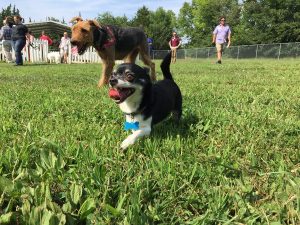 With the pet business becoming a multi-billion dollar business in recent years, it is telling us that more and more people have pets and are taking care of them. Among the fads, if you want to call it that, are “doggy daycares”, mobile groomers and dog parks. A lot of these services are great ideas as far as convenience is concerned, but how safe are they to our pets? Especially the dog parks.
With the pet business becoming a multi-billion dollar business in recent years, it is telling us that more and more people have pets and are taking care of them. Among the fads, if you want to call it that, are “doggy daycares”, mobile groomers and dog parks. A lot of these services are great ideas as far as convenience is concerned, but how safe are they to our pets? Especially the dog parks.
No, I am not going around and saying that dog parks are bad for you dog, but there could be some hidden dangers that may be lurking for the unprotected dog. Most dog parks are public places, so there is a good possibility that not all dogs are properly vaccinated against diseases such as Parvovirus, Roundworms, or even Kennel Cough. These diseases can occur during direct contact with another dog, or even if your pet has licked an area that harbored the diseases or parasites. So my advice is to make sure that your pet is currently vaccinated for all diseases. If they’re not—do not take them there. It is not worth it to possibly expose your pets to those diseases if you can help it.
We all see the dogs being playful in the park, but how do we know that the other pets can’t become overly aggressive? Because of this, I would recommend that your pet be kept on its leash. I know that is not the reason for dog parks, but that way you can control your pet if they or another pet exhibits some aggression so that you may prevent injury and not be faced with a costly veterinary visit.
If you allow your pets to run free in the park, injuries such as torn cruciates and other lamenesses can occur. To reduce this possibility, it might help to train your pets for the rigors that a dog park presents.
Dog parks are popping up in a lot of the communities. Realize that just because they are in a fenced in environment, they are not always completely safe. If you have any questions or issues, please feel free to contact us or give us a call at 618-656-5868.
What Pets Do To Make Our Lives Better
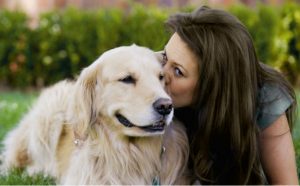 As many of you know, I usually write monthly blogs informing the readers about what we can do to make your pets’ lives better and happier. However this month, I am reversing the trend and writing about what pets do to make our lives better.
As many of you know, I usually write monthly blogs informing the readers about what we can do to make your pets’ lives better and happier. However this month, I am reversing the trend and writing about what pets do to make our lives better.
It is a proven fact that pets can reduce anxieties that we have. To people with anxieties, pets can be like a superhero. Everyone has their own coping mechanisms that work for them, but sometimes having a pet can curb anxiety. By just having a pet present, even though it can’t talk, a person’s phobic and anxiety disorders are often reduced by the pets companionship. This relationship builds self confidence for people that are anxious when they go out in the world.
With depression, people tend to self isolate. So with having a pet, people are forced to go out and walk.
Pets are always down to cuddle. That contact can do wonders to curb anxiety. Maybe it makes you feel less alone or less like you have to handle everything by yourself. With this bonding, one gets a mutual relationship in which the pet and owner give warmth, love and nurturing. Research has also shown that tactile sensations can even lower blood pressure.
Pets are always the ones that listen and don’t ever offer advice. As humans, sometimes we don’t want advice—we just want to vent. A pet will never try to fix you. You can sit for hours on end ranting and they will never try to solve you or your problems. A pet sitting there listening loves you and sometimes that is all you need.
Pet ownership is good not only for people living alone, but for whole family systems. Pets become full members of the family in which lots of interaction swirls around children, parents and siblings as they compete to feed, love and care for the pet. So with a pet at home, this offers a distraction so that a tiny bit of anxiety doesn’t amplify to a big deal. Pet ownership can teach children the value of life in addition to providing them with some sort of responsibility of care and feeding.
Having a pet at home means that there is someone waiting for you to come home and be with you when you are there. Having a pet can give one a sense of security and help with dealing with aloneness better. A pet can provide someone to talk to in order to ease your nerves. A pet there will mean that you are never alone.
Having a pet can help us meet new people. With pet ownership, it requires responsibility and part of that is exercising your dog. While on walks you can make friends and hold conversations with other people. Pets are a great conversation starter, so with them, we can socialize.
No matter what, pets offer unconditional love. Sometimes it feels like no one really likes you. But your pet will always be that person that is on your side.
The benefits of pet ownership are many and they are very much an integral part of our lives. Because of this, we want them to live as long as possible. So it is important to take care of them. If you have any questions, please don’t hesitate to call us at 656-5868.
Can You Spay Or Neuter an Older Pet?
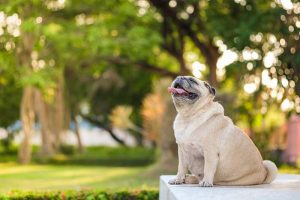 With the new year, it is always time to make resolutions. One of these may be to help control the pet overpopulation by having your pet spayed or neutered to prevent any unwanted pregnancies. If a client asks me what my opinion is, I would definitely recommend to spay or neuter your pet – even if the pet is older and reaching geriatric years in age.
With the new year, it is always time to make resolutions. One of these may be to help control the pet overpopulation by having your pet spayed or neutered to prevent any unwanted pregnancies. If a client asks me what my opinion is, I would definitely recommend to spay or neuter your pet – even if the pet is older and reaching geriatric years in age.
By neutering your male pet, you will be able to curb its behavior that has been influenced by the male hormones such as testosterone. Neutering may help lessen aggressiveness that is stimulated by the presence of female hormones. It will also help reduce and prevent prostate and testicular cancer that can be seen in older male pets that have not been neutered. Neutering may also help prevent spraying in male tomcats. I want to dispel any myth that neutering will make your pet lazy or cause obesity.
When we spay female pets, we are performing what we call an ovariohysterectomy. This is the removal of the uterus and the ovaries. Females can carry even more serious risks if they are un-spayed, which is why you would want to spay even if they are older. Un-spayed females can develop a condition called a pyometra tha is essentially an infection of the uterus that continues to manifest itself. If left untreated, your pet will probably die as a result of the uterus rupturing and causing an abdominal infection, so these are treated as an emergency. Spaying is indicated at this time, however the surgery is a lot more complicated and complications can arise due to the toxicity that the infection is causing. Spaying will also help reduce the risk and incidence of mammary cancer in pets. This is based on the lack of female hormones that were produced from the ovaries that were removed during the surgery.
Because of the hormones, female dogs and cats have their estrus cycles about every 6 to 8 months. During that time, their female organs can swell and create a discharge. These scents that are given off can attract males. So not only are you risking pregnancies but also complications that can follow.
Pet owners tend to worry that their older pet may not handle the anesthesia or surgery well, but pre-surgical bloodwork can help reduce or alleviate the issue with the anesthesia and make it as safe as possible.
Any time a patient undergoes a surgery, there is a risk, albeit a slight risk. The benefits from spaying or neutering clearly outweigh not doing so. If you have any questions, please feel free to contact us here at the Olsen Veterinary Clinic and we would be happy to answer any questions or dispel any myths that you may have heard.
Holiday Pet Toys For 2017
 With the holidays rapidly approaching, pet owners usually ask for gift ideas for their four-legged companions. As with every other Santa’s list from our children, electronics and technology play an important part in holiday pet toys. So without further adieu, I will introduce some ideas that might be appealing to the pet owner with the pet in mind.
With the holidays rapidly approaching, pet owners usually ask for gift ideas for their four-legged companions. As with every other Santa’s list from our children, electronics and technology play an important part in holiday pet toys. So without further adieu, I will introduce some ideas that might be appealing to the pet owner with the pet in mind.
- Bascolor Electric Rotating Butterfly– This gift from Amazon is for the cat owners who want to keep their kitten active. It is described as a butterfly that flashes in the dark that will fulfill your kitty’s hunting urges.
- Cat Scratcher Lounge– This cardboard lounge is infused with catnip that your cat is going to be addicted to in record time. It also can be used as a scratch board. Available from Amazon for about $20.
- K&H Crinkle Sack Cat Bed– This cat bed makes the noise of a paper bag that your cat will love. Inside, it is covered with a plush lamb wool that is easy to wash and take care of. The overstuffed bolster keeps the sack open for easy access for your kitten. It is also available on Amazon.
- Nerf Tennis Ball Blaster– This toy will launch tennis balls 50 feet in the air and is easy to operate. It works with standard tennis balls but if you get the lighter replacement balls they will go farther. No need to touch the slimy ball because it is easy to reload.
- Pet Acoustics Pet Tunes Calming Music Dog Speaker– A bluetooth speaker that is preloaded with 90 minutes of music developed by a sound animal behaviorist to reduce stress and calm nervous canines. It alleviates stress and related behaviors such as excessive barking and pacing which can happen when your pet is home alone during thunderstorms, traveling or when it is adapting to new environments. It comes complete with a rechargeable battery.
- GPS tracking systems– There are many available for the high tech owner that can have a GPS and activity monitor which set up virtual fences to indicate safe zones and give notifications where your pet has traveled too far. They range in price starting at $39.
- Furbo Dog Camera– For the really techie person that wants to see, talk and toss treats to your dog even when you are not at home. It gives smart dog alerts and the camera gives peace-of-mind to the dog’s parents. The camera lets you see, talk and toss treats from anywhere and sends alerts when your dog barks. The two-way camera allows you to hear and speak to your dog and works with Amazon Alexa.
- Pet DNA testing– By discovering your pet’s ancestry, pet owners and veterinarians can work together to tailor wellness plans that fit the unique one-of -a-kind needs of the dog. It helps owners discover typical ailments that certain dogs can have over one another and provide insight to personality traits of the breeds in your dog’s genetic make up. It is also available for cats. Price ranges from $70 to $180.
This is not an all-inclusive list, but it may give pet owners ideas when shopping for our four-legged friends. At this time, I would like to thank each and all of my clients for their loyalty and business that have come my way. May each and everyone have a happy and safe holiday season and a prosperous 2018. Don’t forget to contact us at any time, even during holiday emergencies, if you have any questions.
